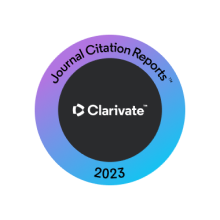Abstract
Introduction: Cardiac implantable electronic devices (CIED) include permanent pacemakers (PPMs), implantable cardioverter defibrillators (ICDs), and cardiac resynchronization therapy (CRT) devices. They treat several cardiac issues and are dependent on batteries; however, similar to any medical equipment, they can fail. The prevalence and risk factors for CIED malfunction must be understood for earlier detection and better patient outcomes. Material and methods: A comprehensive search was conducted through electronic bibliographic sources (PubMed and Cochrane) until January 2023 in order to identify reviews, cohort studies and case reports pertaining to CIED. The primary outcome is the probability of CIED malfunction. The secondary outcome concerned significant risk factors. Two authors independently extracted articles by utilizing pre-established data fields. Using a random-effects model, the aggregated prevalence and 95% confidence intervals (CIs) were computed. Results: The meta-analysis comprised eight review articles, twenty-two retrospective studies, and thirty-seven case reports from the systematic review. The eight review articles contained a CIED malfunction of 4.03% (random-effects model). The pooled prevalence of CIED malfunction in the meta-analysis of 22 retrospective studies was 0.41 percent (using a fixed-effects model) and 8.01 percent (using a random-effects model). Moreover, age, pre-existing cardiac conditions, CIED type, lead placement, and medical device interactions all contributed to an increase in the heterogeneity (I2 = 98.90%) of the risk of CIED malfunction. Conclusion: CIED malfunction is common and more likely to occur in elderly individuals and in certain types of CIED. Clinicians should focus on risk factors and closely monitor the patients with higher probability for CIED malfunction with short intervals
Erratum
Reference 56 was originally listed as '[56]Michał Sobstyl, Mirosław Ząbek, Wojciech Gorecki, Gra_ zynaBrzuszkiewicz-Kuzmicka.Twiddlersyndromeina patientwith tremordominant Parkinson'sdisease.Acase report and literature review. NeurolNeurochir Pol 2015; 49(6):467e71.https://doi.org/10.1016/j.pjnns.2015.10.004.'.
The correct reference 56 is '[56] Tahirovic Elnur, Haxhibeqiri-Karabdic Ilirijana. Twiddler’s syndrome: Case report and literature review. Heart Views 2018;19(1):27-31. Doi: 10.4103/heartviews.heartviews_89_17.'
Recommended Citation
Saeed, Abdullah; AlShafea, Abdullah; AlQthami, Monerah; Saeed, Abdulrahman Bin; AlAhmri, Foton A.; AlQahtani, Norah S.; Al-Muslat, Fatimah A.; and AlQahtani, Atheer
(2023)
"A Systematic Review and Meta-analysis of the Prevalence and Risk Factors in Cardiac Implantable Electronic Device Malfunction,"
Journal of the Saudi Heart Association: Vol. 35
:
Iss.
4
, Article 5.
Available at: https://doi.org/10.37616/2212-5043.1359
Creative Commons License

This work is licensed under a Creative Commons Attribution-Noncommercial-No Derivative Works 4.0 License.




